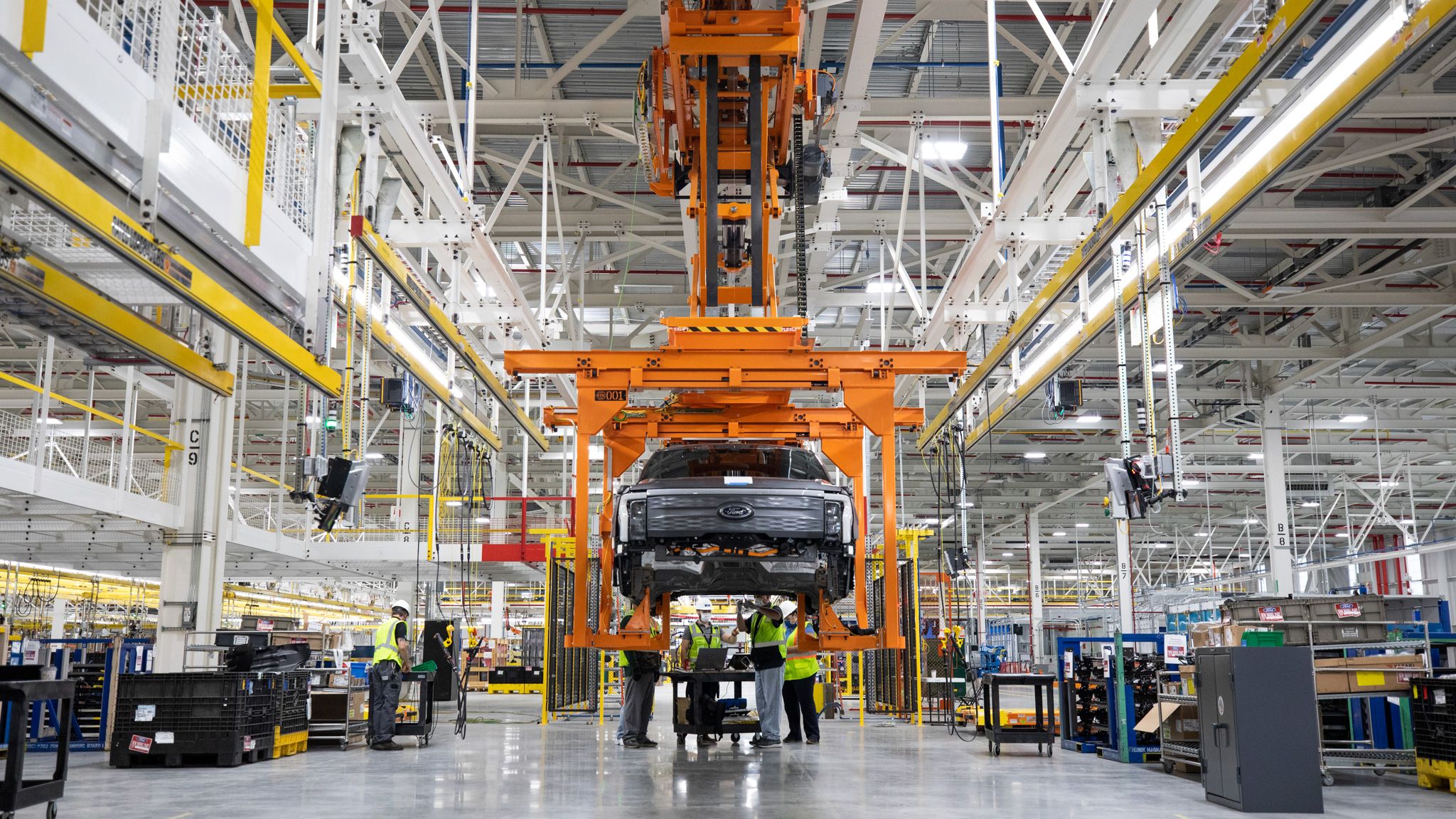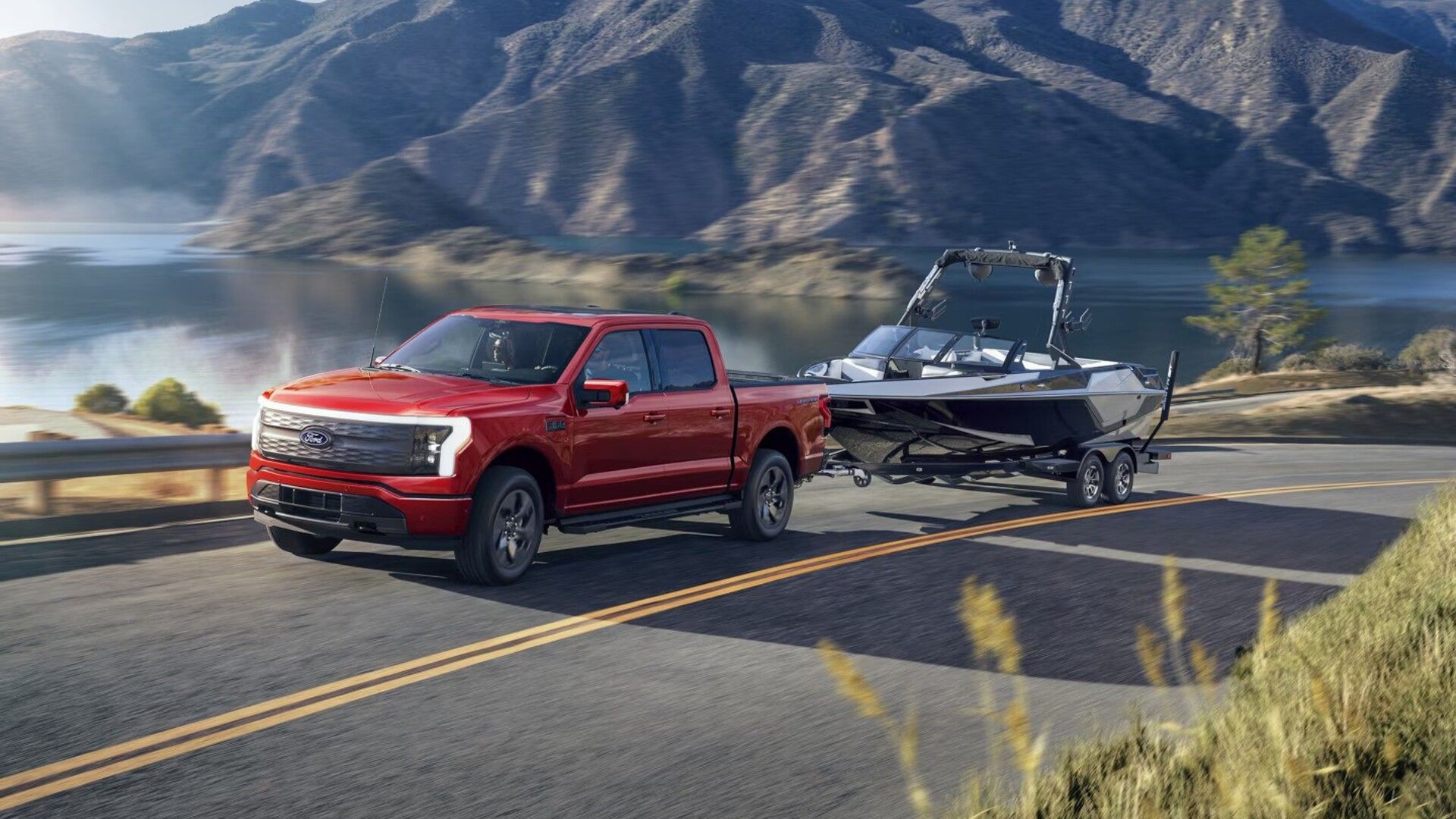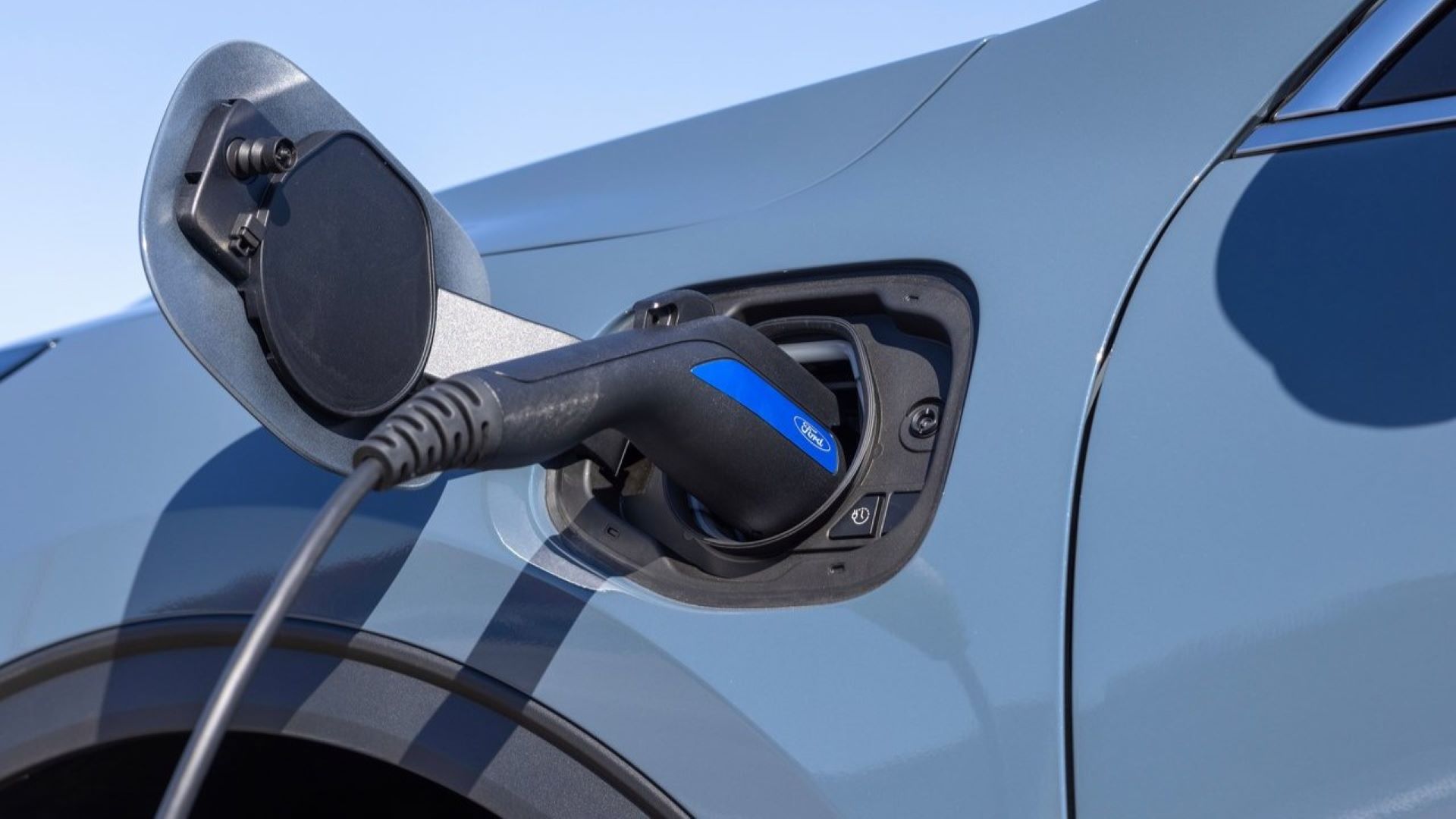During its recent fourth-quarter earnings call, Ford CEO Jim Farley made an honest – and totally unexpected admission about electric vehicles. His critique is obvious to anyone that’s ever used the company’s battery-powered F-150 Lightning pickup truck to do real, honest-to-goodness work, not just visiting local big-box stores or commuting to work, tasks the Lightning, to be fair, excels at.

Related
Ford Suspends F-150 Lightning EV Due To Slowing Demand
The F-150 Lightning assembly line will go idle in mid-November and won’t resume until 2025.
The Achilles’ Heel Of EVs
Responding to an analyst’s question about Ford’s future multi-powertrain strategy where customers are offered conventional combustion engines, hybrid drivetrains, and pure electrics, Farley said, “If you tow [with an EV], it’s not a good technology. The batteries have to be too big. So, it’s not a panacea.” That’s a stinging admission from the man in charge of the company, but he is not wrong.
The F-150 Lightning, for instance, is one of the best towing vehicles available today. With up to 580 horsepower and 775 pound-feet of torque, the truck is almost completely unfazed by even the heaviest of trailers, it is extremely planted, and the independent rear suspension provides a smooth, settled ride even over war-torn pavement. The problem is, this truck’s battery doesn’t provide enough range while towing and hauling, plus that pack is huge, immensely heavy, and costs a fortune.
When fitted with the optional, 131-kilowatt-hour extended-range battery pack, the Lightning offers up to 320 miles of range. This is respectable for everyday use, but it rapidly diminishes when the truck is working hard. This wouldn’t necessarily be an issue, except for the fact that charging the battery takes far longer than pouring gas or diesel into a fuel tank, and this isn’t something you can do on the shoulder of the highway when the battery runs out. Additionally, DC fast chargers can be few and far between, and they are notoriously unreliable, further complicating the EV towing situation.
The Perfect Powertrain Solution?
Plug-in hybrids and/or extended-range electric vehicles could be the perfect solution going forward, an ideal stepping stone between conventional combustion powertrains and pure EVs, something Farley commented on during Ford’s latest earnings call. “These are electric vehicles. They use 95 percent of the miles … electric, and they plug them in every night. And the satisfaction is even higher because they’re more affordable for people,” he said. “The batteries [are] so much smaller with 150-mile range versus these huge batteries in three[-row] crossovers for 300- and 350-mile range, you’re talking about tens and tens and tens of thousands of dollars.”
Plug-in hybrids are the answer, at least for the foreseeable future. You get some respectable electric range for everyday, around-town driving, and there’s still a combustion engine for cross-country trips. “They (customers) love the feeling [of] electric, but they just can’t get it. It’s $30,000, $40,000 too expensive for these big vehicles,” Farley said. “So, this technology gives them the electric experience without the range anxiety.”
Reportedly, Ford is hard at work on a lineup of much more affordable EVs and range-extended powertrains. Together, these future vehicles could provide exactly the market coverage the automaker needs going forward.

